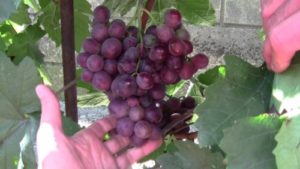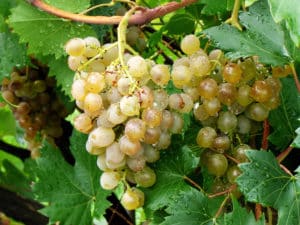Description and characteristics of Rumba grapes, planting and care features and history
Growing Rumba grapes is a relatively recent hobby of Russian gardeners. The variety is ten years old. But even in such a short period, he managed to gain popularity and squeeze out many, once famous, table grape cultivars. Its prospects are growing due to the peculiarities of both the plant itself and its cultivation. But what are they?
Description and history of the variety
The Rumba grape variety is hybrid and fast growing. The vine gives a five-meter growth of shoots on the bush. Full fruiting begins within a couple of years, after the grapes are planted. A description of this variety is not possible without mentioning the size of the brushes - they are large and often weigh in a kilogram. Cases when the weight of the hand exceeds one and a half kilograms are not so rare.
Rumba is classified as a young variety, since it is not more than 10 years old. It was bred by means of hybridization between Cherrel and Red Delight, by V. Kapelyushny, a famous grape-grower-enthusiast from the Rostov region.
Distinctive characteristics
The main characteristic of the variety is that it belongs to the table. This means that the best use is not the production of wine, but consumption as food.
But, of course, there are other distinctive qualities that make Rumba stand out from the competition:
- fruit color - pink;
- berry weight - up to 10 grams;
- shape - oval;
- aroma - pronounced nutmeg;
- sugar content - up to 23%.

The berries ripen depending on weather conditions: at least 95 days, and a maximum of 102 days. The plant is able to withstand rather severe frosts without shelter - up to -23 degrees Celsius. This is due to the persistence of the parent varieties.
What are the virtues of Rumba grapes?
This grape is distinguished by a number of advantages that have made it popular among domestic gardeners and summer residents. Today it is an extremely popular table variety.
So why is the variety so loved? But because Rumba:
- has transportable berries;
- bears fruit stably;
- withstands low temperatures even without shelter;
- ripens amicably;
- cuttings root easily in most types of soil;
- has a pronounced sweetness of berries.
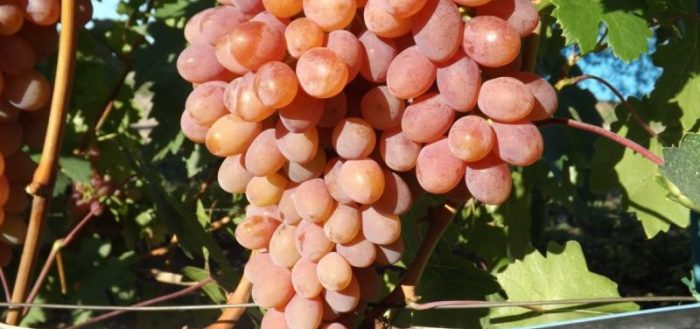
Of course, it does not do without some drawbacks. But they are the other side of the merits. So, a high yield sometimes leads to a decrease in the size of the fruit.
Landing procedure
Rumba grapes are classified as undemanding varieties. Not picky about the composition of the soil. Unlike industrial varieties, it grows easily on heavy, humus-rich soils.And, at the same time, it tolerates very poor soil.
But such unpretentiousness does not mean that the culture can do without observing certain planting rules.
It is required to dig up the soil a couple of weeks before digging trenches for planting cuttings. A bucket of organic fertilizers is applied to each square of the plot area.
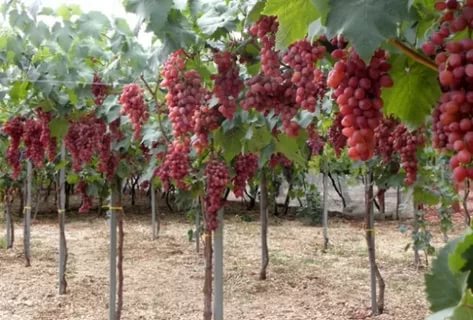
A distance of at least three meters is provided between future bushes. Arrangement of drainage is important, since grapes do not like stagnant water. Also, a support is installed in each pit.
Care features
The rules for caring for the plant are quite simple, and include timely watering and the introduction of the necessary fertilizers. At the same time, as noted above, grapes do not like too much water. The seedlings are watered especially abundantly immediately after planting. Later, they are limited to two dozen liters per bush for watering - after the soil dries out. The volume is reduced even more when the rest period approaches.
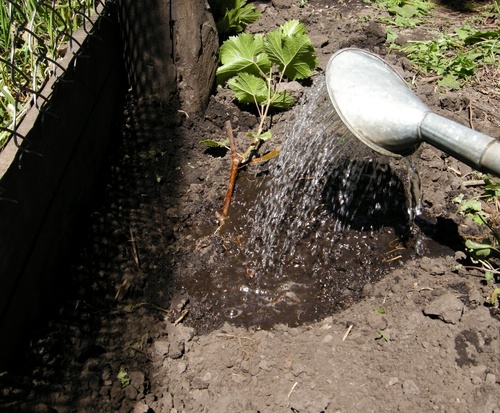
Complex fertilizers are rarely applied - once every three years. Nutrients are added during watering. Organic fertilizers are applied at the same frequency. Superphosphate, nitrate and potassium salt are applied before flowering. Pruning is a must for any grape bush. It makes it possible to regulate the load on the plant during fruiting. The optimal number of eyes is 35 per bush.
A sign of correct formation is the ripening of the vine by 2/3.
Reproduction methods
Rumba grapes propagate in the same way as other varieties - by seedlings, which are cut from the vine in spring or early summer.
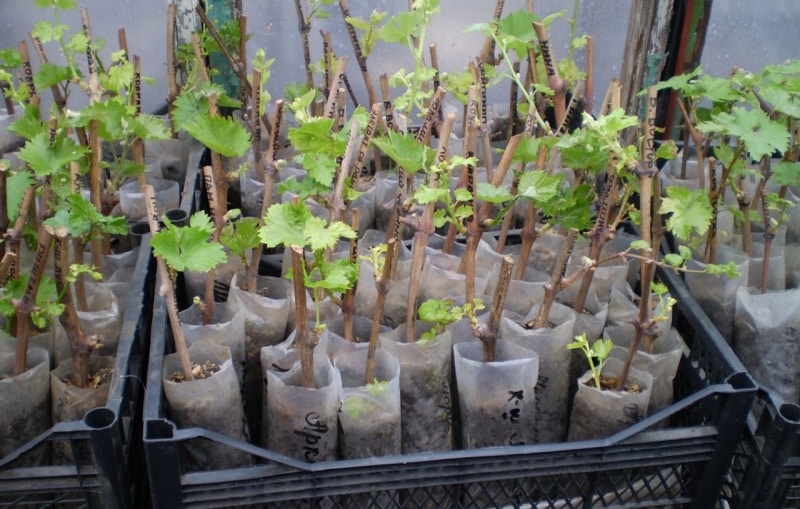
What diseases is prone to?
This variety is particularly resistant. It is rarely affected by common fungal diseases such as mildew and powdery mildew. Although, from time to time, it requires preventive fungicide treatments.
Conclusion
The Rumba grape variety is the pride of domestic amateur selection. This hybrid of two other popular cultivars is exceptionally tough. It is able to withstand such features of the Russian climate as very low temperatures in winter, without noticeable consequences.
The taste of the berries is sweet, and the aroma is distinguished by pronounced nutmeg notes. The ease of maintenance has already made this culture very popular.
